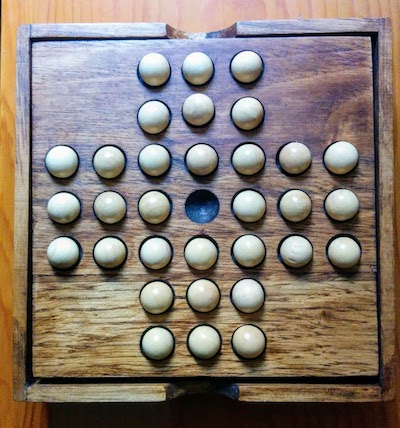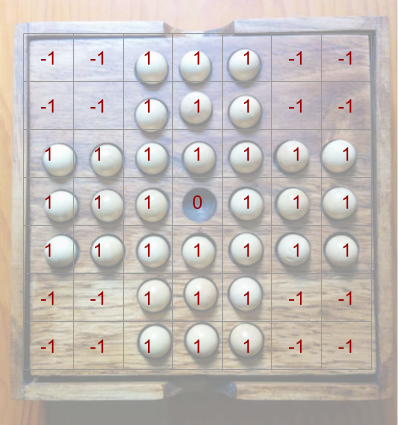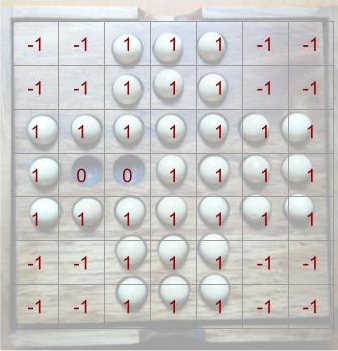Solving the Peg Solitaire with Backtracking
When I was a kid I struggled with Peg Solitaire. I found it almost impossible to find a solution and my best score was having 2 pegs left. You win the game if you are left with only 1 peg left.

I gave up on the problem. But then, some years later I started at the University with my first adventures on programming with C++. There was an “Aha!” moment when I learnt about some algorithmic technique called Backtracking. Basically, Backtracking allows you to explore all possible solutions for a given problem. If it goes through some path where it can’t a find solution it “goes back” and tries a new path.
![]()
So the only missing thing was how to model the Peg Solitaire board and its movements. Easy peasy. We could just model the board as a 7x7 matrix. I then assigned some numeric codes depending on if the peg is present (1), not present (0) and if the position is outside of the board (-1).

Regarding movements for a given position within the matrix we should check all possible movements if any. For instance, for the position within the matrix [1, 3] a valid movement would be moving the peg to the right. This would be the resulting matrix:

You could check the original code in C++ or a refactored solution in Ruby (the refactor is not complete, so feel free to improve the solution and submit a pull request).
Here a relevant bit from the C++ code:
if((j + 2) < 7 && M[i][j + 1] == 1 && M[i][j + 2] == 0) { // Can move peg to the right
M[i][j] = 0;
M[i][j + 1] = 0;
M[i][j + 2] = 1; // peg moves to this position "eating" the adjacent
// Solution update
solution[pegs_count - 1].row = i;
solution[pegs_count - 1].col = j;
movements[pegs_count - 1] = "right";
pegs_count--;
// Backtracking call. It goes to a child node
backtracking(M, pegs_count, solution, movements);
// It didn't find a solution
// Let's undo the movement and will try with another child
M[i][j] = 1;
M[i][j + 1] = 1;
M[i][j + 2] = 0;
pegs_count++;
}Here you could check the solution found by the above scripts:
So here you have a clear example of Transfer of Learning. Hopefully this will inspire you to solve similar problems.
Happy coding! 💻